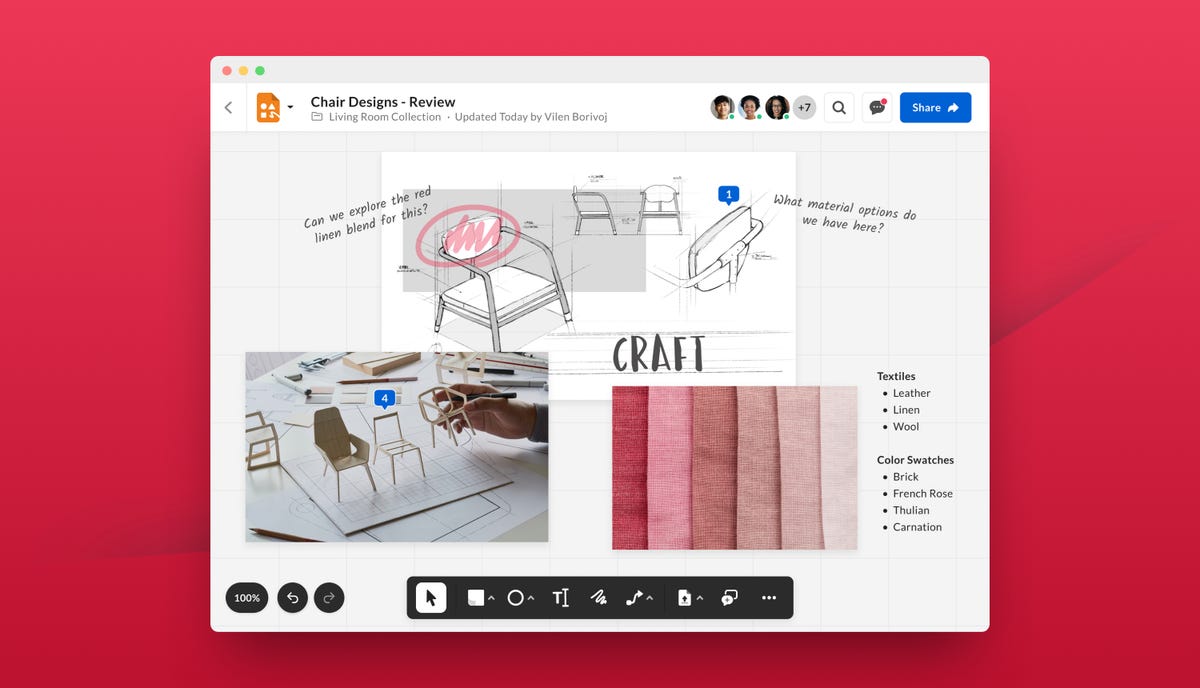Box CEO Aaron Levie: Company culture and technology are inseparable

Box Canvas lets users visually collaborate in real-time or asynchronously while keeping their work on the Box platform. Image: Box
Ten years ago, the challenge of building a strong company culture largely centered around physical places and offline meetings: How do you create an office space that's welcoming and inclusive? Can you motivate employees with team outings or events?
Now, however — especially after the pandemic jolted forward digital communications — building a company culture requires the right digital tools and experiences.
Also: Hybrid workers don't want to return to the office. But soon, they might have to
“The question is, what tools can I put in place?” Box CEO Aaron Levie said to ZDNET, ahead of the annual BoxWorks conference. “What styles of work can I enable that will best accomplish the kind of cultural values we're trying to create? And generally, with very few exceptions, that would always lead you to operating in the cloud.”
Supporting a strong company culture is a pressing matter right now for leaders who want to keep employees from “quiet quitting” and employees who want a gratifying work experience. Helping remote employees feel engaged and connected to their company starts right away, with a strong digital onboarding process.
The updated version of Box Notes is now generally available. Image: Box
As co-founder and CEO of Box, a cloud-based platform for creating and managing content, Levie thinks about how both his own teams and his customers can leverage cloud-based tools to create positive remote work experiences.
A strong work culture, he said, requires both the right leadership and the right tools.
“The leadership has to be aligned to how you're going to operate,” he said. “What's the cadence, what's the rhythm, what are the norms of the organization? That has to be locked in. But… you can have all the management in the world, but if then employees have to use tools that don't facilitate working in this modern way, it's all wasted.”
He continued: “Conversely, you could have the best tools in the world, but if you have a broken culture or culture that doesn't take advantage of them, or develop the right norms of how to operate this way, then it's also useless.”
This puts increasing pressure, Levie noted, on leaders like CIOs, who are responsible for choosing tools that align with a company's values, whether that means putting an emphasis on productivity, transparency or strong collaboration.
“Technology enables your culture, and culture is going to influence your technology. And those two things are now increasingly inseparable.”
Also: Four ways to get noticed in the changing world of work
With companies asking for more out of their technology stacks, Box has been busy adding more capabilities to its platform. During the BoxWorks conference this week, the company is announcing that an updated version of Box Notes, its real-time content collaboration and project management tool, is now generally available. Additionally, its whiteboarding tool Box Canvas will be out in beta in November. And an improved Content Insights, which will help teams track how content is accessed and used, is coming soon. They'll all be on the Box platform at no additional cost.
The redesigned Box Notes includes features like a table of contents and divider lines to simplify content organization and navigation, code blocks for technical collaboration, enhanced table and image capabilities. It also has improved security and control capabilities, like granular permissions and access stats.
Box Cavnas, meanwhile, lets users visually collaborate in real time or asynchronously while keeping their work on the Box platform. Meanwhile, Content Insights' improved features will be available later this month.
With more than 110,000 customers on the platform, covering 67% of the Fortune 500, Box has a broad view of the remote and hybrid work trends that companies are adopting.
“What we see is that work is fundamentally changing,” Levie said. “We're working from anywhere. We're now working with a network as opposed to just within our organization. Digital is now at the core of how we work. Data is much more abundant — we're creating more of it than ever before. Automation is central to our workflows. And we're starting to secure data as it flows through an organization, not just inside the four walls of the organization.”

